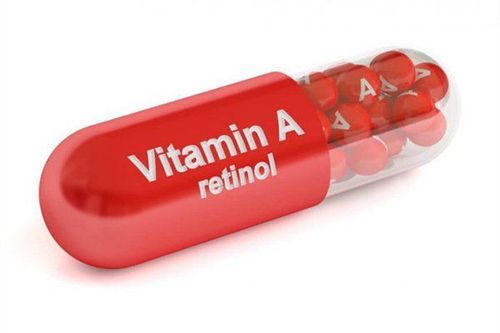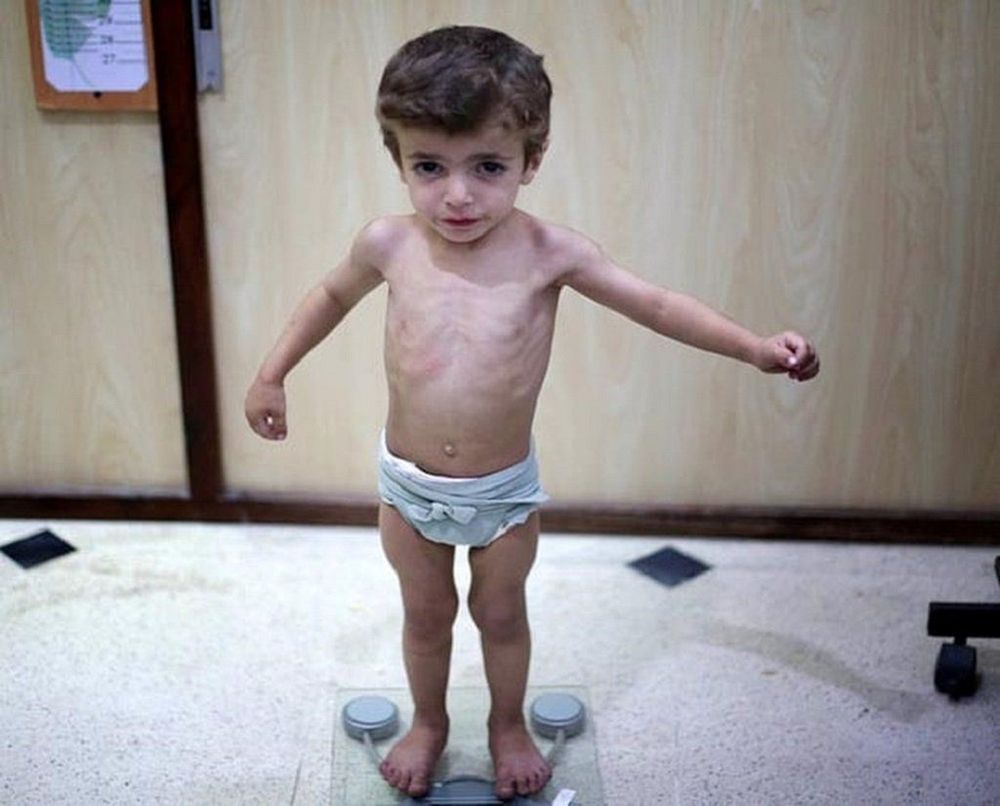This is an automatically translated article.
The article was consulted with Master, Doctor Ngo Thi Oanh - Pediatrician - Department of Pediatrics - Neonatology - Vinmec Ha Long International General Hospital.Protein-energy malnutrition is an important type of nutritional deficiency, and it is difficult for any disease to compare in terms of public health implications. All forms of protein-energy malnutrition are related to low-protein and low-energy diets to varying degrees.
1. How is malnutrition manifested?
Malnutrition is a specialized term for a medical condition caused by an inadequate or disproportionate supply of nutrients in the diet.Protein-energy malnutrition is a medical condition that occurs when a long-term, low-protein and energy-poor diet leads to retardation of children's physical and mental development.
Malnutrition is currently the most important and common health problem of children in developing countries like ours today. WHO (2009) estimates that 27% of children under the age of 5 in developing countries are malnourished. Vietnam (2013) the rate of malnutrition is 15.3% underweight, 25.9% stunting and emaciation is 6.6%.
Although called protein-energy malnutrition, this is not only a deficiency of protein and energy, but often a combination of many other nutrients, especially micronutrients. It is common in young children but can also be seen in older children such as adolescents and adults, especially in women of childbearing age.
Malnourished children show signs of retardation in physical and intellectual development: Children are too short, too thin for their age, weak in physical strength, poor in school. The consequences of malnutrition are often irreversible, with young children affecting their health and growth, and when growing up, their ability to study and work. Malnutrition can occur at any age, however, malnutrition is preventable.
Protein-energy malnutrition is the leading cause of death in children. According to WHO (September 1980), each year, in third world countries, 10.4 million children under 11 months of age and 4.4 million children aged 1 to 4 years die, of which 57% are deaths. due to protein-energy malnutrition (43% is due to infections, mainly diarrhea, which means that every minute 25 children under 5 years old die from malnutrition.
2. Causes of malnutrition in children

Nuôi con bằng sữa mẹ không đúng cách và cho ăn bổ sung không hợp lý là nguyên nhân gây suy dinh dưỡng protein năng lượng
Due to lack of knowledge about nutrition: First of all, it is lack of food in quantity or quality and infectious diseases. Pre-school children are the most malnourished because their bodies are at a rapid growth stage, their nutritional needs are high, and they don't eat enough nutrients.
Improper breastfeeding and inappropriate complementary feeding play an important role in malnutrition. Do not breastfeed babies soon after birth, do not give babies colostrum, do not exclusively breastfeed children for the first 6 months, wean children early, do not make use of breast milk, bottle-feed babies, give complementary foods to babies. too early or too late, inadequate nutritional supplements, insufficient quantity of complementary foods according to age are the basic causes of malnutrition.
Due to infection: Bacterial infections easily lead to malnutrition due to digestive disorders, and vice versa, malnutrition easily leads to infections due to reduced resistance. Therefore, the prevalence of malnutrition can fluctuate seasonally and is often high during the seasons when infectious diseases are high (diarrhea, respiratory infections, malaria...)
During the first few months of life After birth, babies who have had poor growth during the fetal period (fetal malnutrition) are at high risk of becoming malnourished. The child's underdevelopment, expressed in terms of weight for age and height, occurs over a relatively short period of time, from birth until the child is 2 years old.
Root cause
Due to inadequacy in maternal and child care services, problems with clean water and sanitation, and unsanitary housing conditions.
Root cause
Is poverty, backwardness in terms of development in general including economic inequality.
2.2. Common comorbidities Usually malnutrition is accompanied by deficiency of other micronutrients, with or without clinical manifestations such as deficiency of vitamin A, folic acid, iron... With varying degrees according to different local regions. Some of these micronutrients are also being considered to cause growth retardation and growth retardation, such as iodine, iron and zinc.
Thus, protein-energy malnutrition is actually a medical condition caused by a lack of more nutrients than a mere lack of protein and energy.
The period from birth to age 2 is an important window for optimal growth and development, both physically and behaviorally. Many studies have demonstrated that this is the time when growth decline, deficiency of important micronutrients and increase in common infections such as diarrhea and respiratory infections occurs. After a child passes the age of 2, it is very difficult to reverse the pre-existing stunting.
Poor breastfeeding practices and complementary feeding, along with infectious diseases are the leading causes of child malnutrition during the first 2 years of life. Therefore, nurturing young children plays a particularly important role in the health and survival of children. WHO and UNICEF recommend that children be exclusively breastfed for the first 6 months and then receive appropriate complementary foods with continued breastfeeding until 2 years of age and beyond.

Thông thường suy dinh dưỡng đi kèm với tình trạng thiếu các vi chất dinh dưỡng khác như vitamin A
3. Classification of malnutrition
3.1. Clinical classification This is a fairly classic classification, including the following severe nutritional deficiencies:Atrophic malnutrition (Marasmus): Common in clinical practice. This is a very severe form of nutritional deficiency, due to the lack of both energy and protein in the diet. Atrophic malnutrition can occur within the first year, which is different from edematous malnutrition (Kwashiorkor) - which mainly occurs in children aged 1-3 years. Weaning too early or inappropriate complementary foods are common causes of atrophic malnutrition. At that time, children fall into a state of poor appetite, infections are often associated with a vicious cycle that is diarrhea and respiratory infections.
When in this state, the babies look very thin, they only reach 60% of the standard weight, their bodies are dehydrated, they are thin, they are weak, their skin and bones are wrinkled like old people.

Suy dinh dưỡng thể teo đét (Marasmus).
Some chubby babies are still at risk of malnutrition. Specifically, with swelling of the whole body, white skin, soft muscles, weight only about 60-80% of the standard. Hair is thin, soft, easy to break, eat less, belly is distended. On the skin, there are small red spots all over the body, which gradually change color and peel, ooze, easily become infected and ulcerate.
In addition, according to the clinical classification can be intermediate (Marasmic-Kwashiorkor), this form is much more common than the two above with milder disease severity. At this stage, children only reach 60% of their weight, although they have muscle atrophy, they may show signs of edema, anorexia, digestive disorders, muscle atrophy, and distended abdomen. Or maybe the child was previously under the category of edematous malnutrition, treated but not completely.
3.2. Classification of malnutrition in the community To determine the status of malnutrition, people are mainly based on anthropometric indicators (weight for age, height for age and weight for height).
Since 2006 the WHO reference standard (WHO 2006) is recommended to be used and until now, this is the widely accepted classification scale in the world.
Based on children's weight and height and compared with the standard population of the World Health Organization in 2006, people divide malnutrition into 3 types:
Underweight malnutrition: Weight is lower than with standard levels of children of the same age and sex (using a weight-for-age cut-off score of less than -2SD). When children suffer from this type of malnutrition, it manifests as anorexia, eating less, and a thin appearance due to difficulty in absorbing essential nutrients for the body. There are cases where the mother takes care but still can't gain weight. The reason is that the child's digestive system is poor and inefficient, it may be because we learned to eat solid foods early, affecting the digestive system later, or because the baby is sick, infected with worms... Physical malnutrition stunting: is a decrease in the growth rate of the body, a manifestation of chronic malnutrition, which can begin early from fetal undernutrition due to maternal undernutrition. Determined when the height is lower than the standard level of children of the same age and sex. In this form, mothers notice that their children are slow to grow in height compared to their friends, the height is only less than 90% of the standard. On average, the height of a healthy baby at birth is about 50cm, in the first 3 months, the baby will increase by 3cm each month, and on average about 2cm in the following months. Undernutrition is an atrophy of muscle and body fat, which is considered acute malnutrition because it usually manifests in a short time. Defined as weight-for-height below -2SD. The above are the types of malnutrition caused by protein-energy deficiency in children and the manifestations that mothers need to know so that they can easily detect which malnourished children are in, and help mothers take effective preventive measures. best health for children. When there is a suspicion that a child is malnourished, parents should take the child to a doctor and measure the child's height - weight to reflect on the growth chart to provide necessary information for the doctor when examining. .
To prevent and improve malnutrition in children, parents should supplement with supporting products containing lysine, essential micro-minerals and vitamins such as zinc, chromium, selenium, B vitamins to help meet meet the nutritional needs of the child. At the same time, these essential vitamins also support digestion, enhance nutrient absorption, help improve anorexia, and help children eat well. Parents can also apply dietary supplements and functional foods derived from nature for easy absorption by the baby. The most important thing is that the improvement of the baby's symptoms must take place over the long term. Combining many types of functional foods at the same time or changing many types in a short time can make the baby's digestive system unable to adapt and completely not good. Therefore, parents must be really persistent with their children and regularly visit the website vimec.com to update useful baby care information.
The article references the source: Vietnam National Institute of Nutrition.













